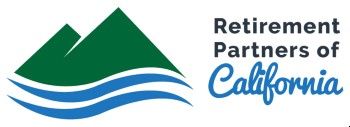Here is your Plan Sponsor’s Quarterly Calendar: a great list of tasks to keep in mind during the next three months.
October
- Audit third-quarter payroll and plan deposit dates to ensure compliance with the DOL’s rules regarding timely deposit of participant contributions and loan repayments.
- Verify that employees who became eligible for the plan between July 1 and September 30 received and returned an enrollment form. Follow up on forms that were not returned.
- For calendar-year safe harbor plans, issue the required notice to employees during October or November (within 30–90 days of the beginning of the plan year to which the safe harbor is to apply). Also, within the same period, distribute the appropriate notice if the plan features an Eligible Automatic Contribution Agreement, Qualified Automatic Contribution Agreement and/or Qualified Default Investment Alternative.
November
- Prepare to issue an announcement to employees to publicize the plan’s advantages and benefits, and any plan changes becoming effective in January.
- Conduct a campaign to encourage participants to review and, if necessary, update their mailing addresses to ensure their receipt of Form 1099-R to be mailed in January for reportable plan transactions in the current year.
- Check current editions of enrollment materials, fund prospectuses and other plan information that are available to employees to ensure they are up to date.
- Provide quarterly benefit/disclosure statement and statement of plan fees and expenses actually charged to individual plan accounts during the prior quarter, within 45 days of the end of the last quarter.
- Prepare and distribute annual plan notices, such as the 401(k) safe harbor for safe harbor plans with a match, the Qualified Default Investment Alternative annual notice and automatic enrollment and default investment notices, at least 30 days before the plan year end.
December
- Prepare to send year-end payroll and updated census data to the plan’s recordkeeper in January for year-end compliance testing (calendar-year plans).
- Verify that participants who terminated during the second half of the year selected a distribution option for their account balance and returned the necessary form.
- Review plan operations to determine if any ERISA or tax-qualification violations occurred during the year and if using an Internal Revenue Service or DOL self-correction program would be appropriate.
Consult your plan’s counsel or tax advisor regarding these and other items that may apply to your plan.
Ready to discuss your retirement plan with a 401(k) Advisor?
RP-786-0522 Tracking #1-05287814
For plan sponsor use only, not for use with participants or the general public. This information is not intended as authoritative guidance or tax or legal advice. You should consult with your attorney or tax advisor for guidance on your specific situation.
Kmotion, Inc., 412 Beavercreek Road, Suite 611, Oregon City, OR 97045; www.kmotion.com
©2022 Kmotion, Inc. This newsletter is a publication of Kmotion, Inc., whose role is solely that of publisher. The articles and opinions in this publication are for general information only and are not intended to provide tax or legal advice or recommendations for any particular situation or type of retirement plan. Nothing in this publication should be construed as legal or tax guidance; nor as the sole authority on any regulation, law or ruling as it applies to a specific plan or situation. Plan sponsors should consult the plan’s legal counsel or tax advisor for advice regarding plan-specific issues.






